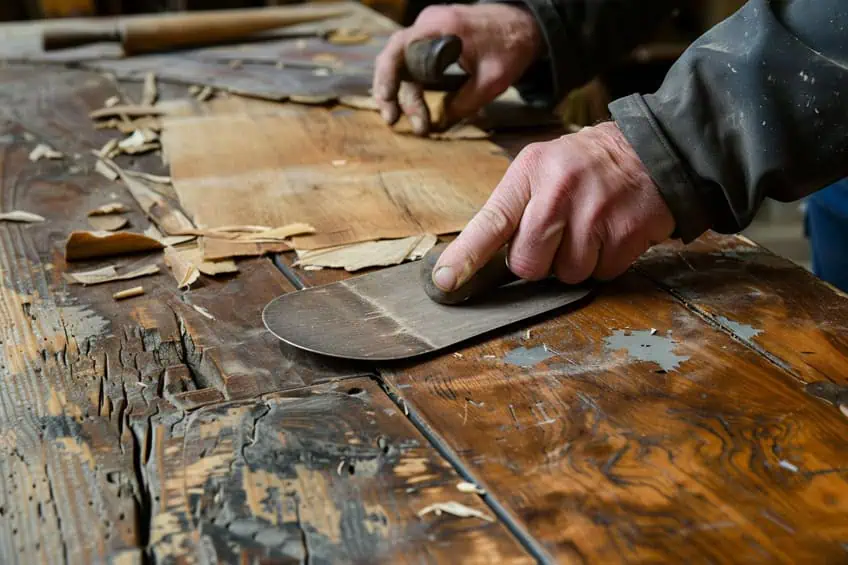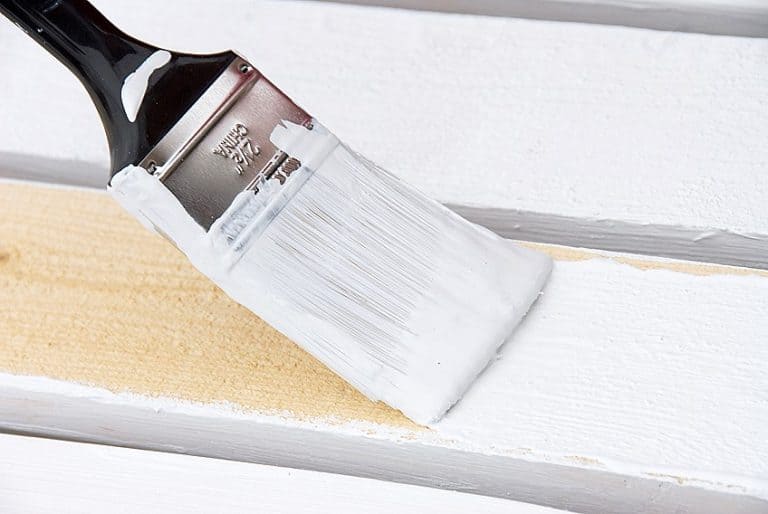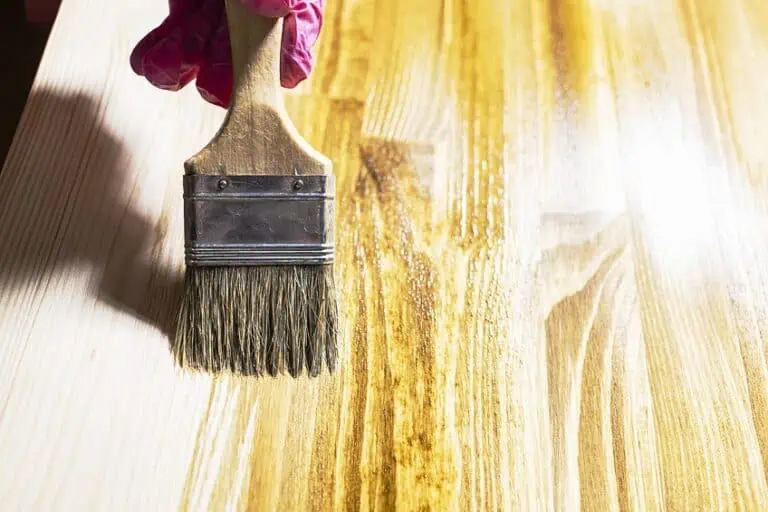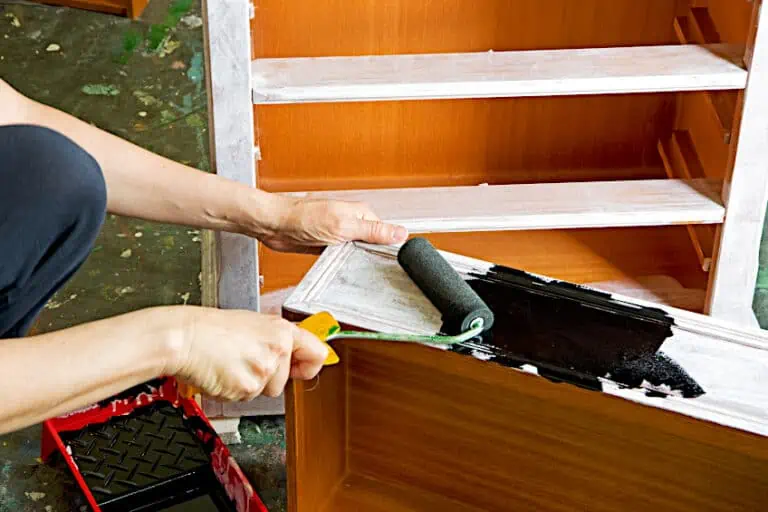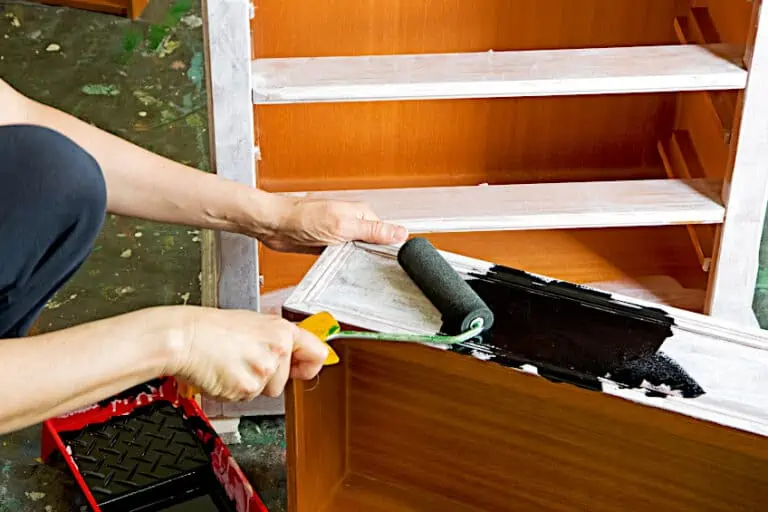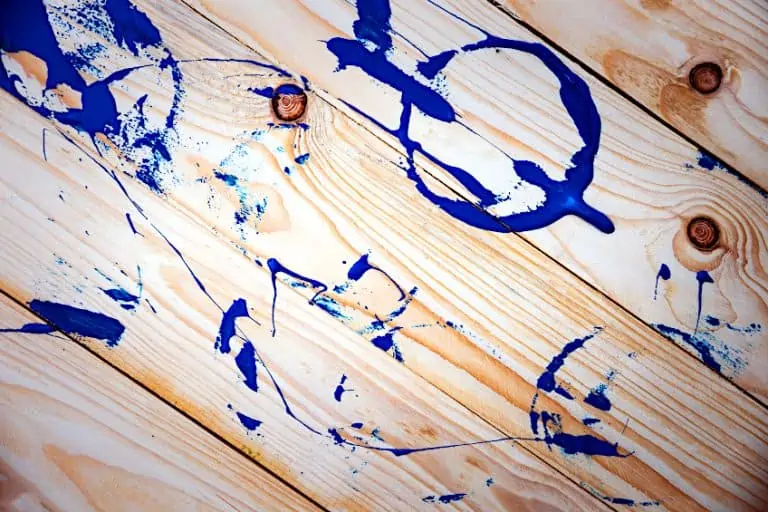How to Remove Veneer – A Guide on Stripping It Down
Are you ready to peel away the secrets of veneer removal? Whether you’re rescuing a vintage piece or giving a modern twist to your furniture, mastering the art of veneer removal can be both satisfying and transformative. Get ready to uncover the tips and tricks that will have you peeling with precision and unveiling the beauty beneath the surface. Let’s dive into the world of woodworking wizardry and learn how to say goodbye to veneer like a pro!
Table of Contents
Key Takeaways
- Removing veneer involves a preparation phase to assess the best removal method.
- A variety of techniques like heat application, chemical stripping, or scraping can be used.
- After veneer removal, the wood surface can be refinished for improvement or restoration.
What Is Veneer?
Veneer refers to thin pieces of material, typically wood, that are applied to the surface of furniture, flooring, or cabinetry to achieve a desired aesthetic. This material effectively emulates the appearance of solid wood while often being more cost-effective and reducing the use of valuable hardwoods. Types of veneers include:
- Raw: Unprocessed, requiring finishing after application.
- Paper-backed: Thin layer reinforced with paper.
- Phenolic-backed: Reinforced with a phenolic backing for durability.
- Wood on wood: Multiple layers of veneer laminated together.
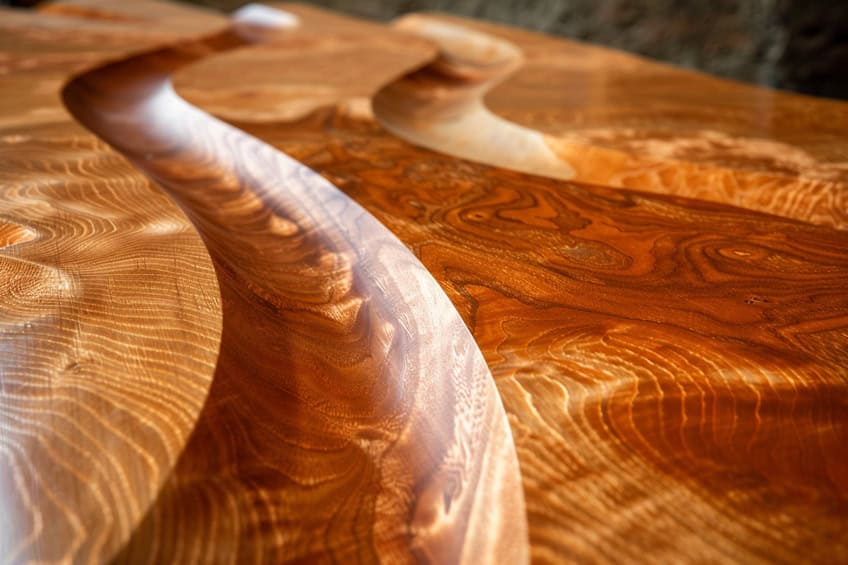
Veneer thickness can vary, influencing its application method and the final appearance of the piece. Thinner veneers are less durable but more flexible, while thicker veneers offer increased longevity at the cost of reduced pliability.
The choice of veneer type should align with the project requirements and desired outcome.
Understanding Veneer and Its Applications
Veneer plays a significant role in both aesthetics and functionality when it comes to home decor and furniture manufacturing. It provides a surface that can exhibit the beauty of wood without the cost of solid lumber.
Types of Veneer
Veneer refers to thin slices of wood or other material that are typically glued onto core panels to produce flat surfaces. There are several types of veneer, each with specific attributes.
- Raw veneer: Has no backing and can be used with both sides showing.
- Paper-backed veneer: Is more stable and easier to apply with its paper backing.
- Phenolic-backed veneer: Has a plastic layer for added durability.
- Laid-up veneer: Consists of multiple pieces of veneer that are glued together.
- Reconstituted veneer: Is manufactured from fast-growing species to mimic more expensive and rare woods.
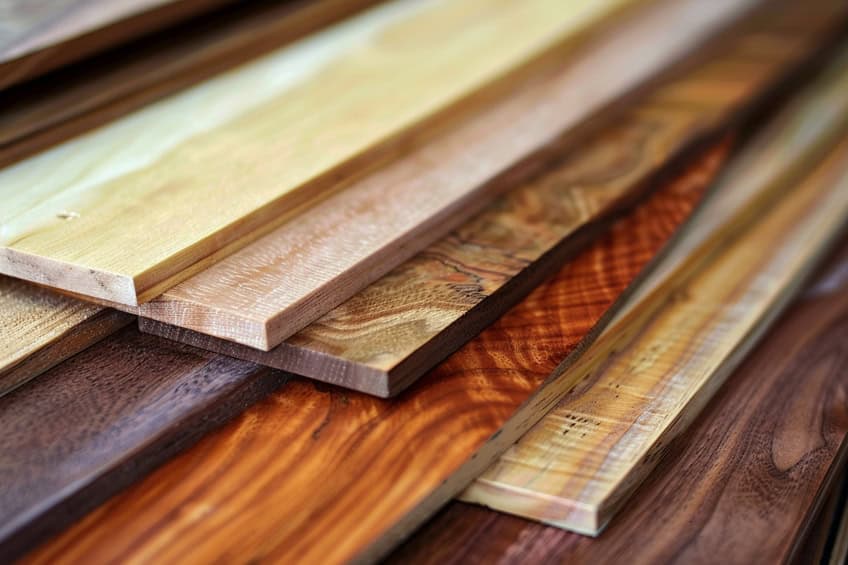
Where Veneer Is Used
Veneer’s uses are extensive in various domains due to its versatility. Below are the common areas where veneer is prominently utilized.
- Furniture: For everything from high-end tables to affordable flat-pack options.
- Cabinetry: It is widely used in kitchen, bathroom, and storage cabinets.
- Home décor items: Such as clocks, picture frames, and decorative panels.
- Architectural applications: Including doors, flooring, and wall panels in residential and commercial spaces.
By using veneer, manufacturers can create pieces that are not only attractive but also cost-effective and sustainable.
Preparation for Veneer Removal
Removing veneer from wood furniture can be a straightforward task with the right approach and tools. Veneer is a thin decorative covering of fine wood applied to coarser wood or other material, usually used to improve aesthetics or restore antique pieces. Over time, this veneer can become damaged or outdated, prompting the need for removal. Being informed about the correct methods and having a clear plan can greatly simplify the process.
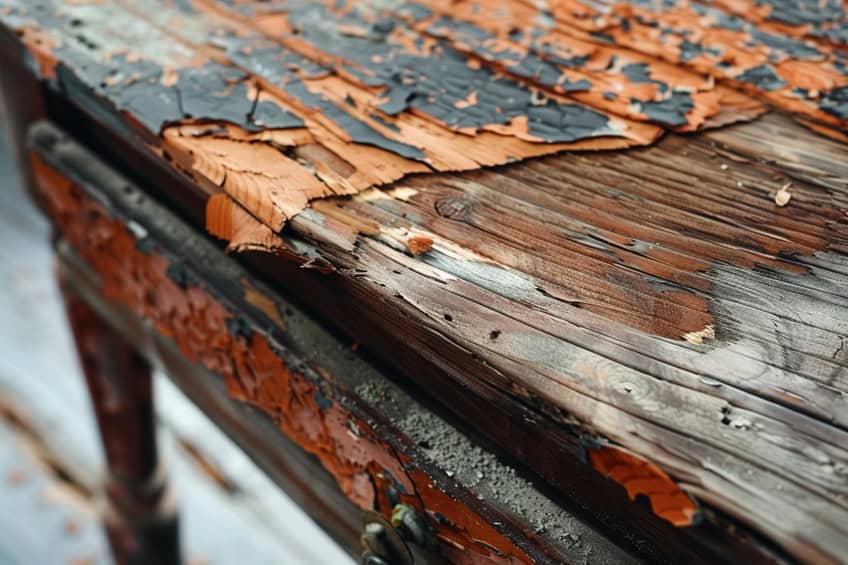
Proper preparation is crucial for successful veneer removal. This involves assessing the veneer’s condition and selecting an appropriate method to dissolve or weaken the adhesive that binds the veneer to the substrate. Techniques such as applying heat, using a chemical stripper, or physically scraping can all be effective, depending on the situation and the delicacy of the item. Once the veneer is removed, the wood beneath can be refinished to restore or repurpose the furniture.
Safety Precautions
Safety should never be compromised while removing veneer. Individuals undertaking this task must equip themselves with the proper protective gear. This includes wearing safety goggles to shield the eyes from particles and gloves to protect the hands.
Depending on the method of veneer removal, respiratory protection like a dust mask or respirator may also be needed to avoid inhaling any fine dust or chemical strippers.
Gathering Required Tools
A successful veneer removal starts with assembling the right set of tools. The basic toolkit should include:
- Scraper: A metal putty knife is recommended for its sturdiness, but a plastic putty knife may be required for delicate surfaces to prevent further damage.
- Hammer: This tool can help to gently tap the putty knife or scraper under the veneer edge.
- Heat gun: When dealing with glue that is resistant, a heat gun can soften it, making the removal process easier.
- Putty knife or paint scraper: These are crucial for the physical removal of the veneer once the glue is loosened.
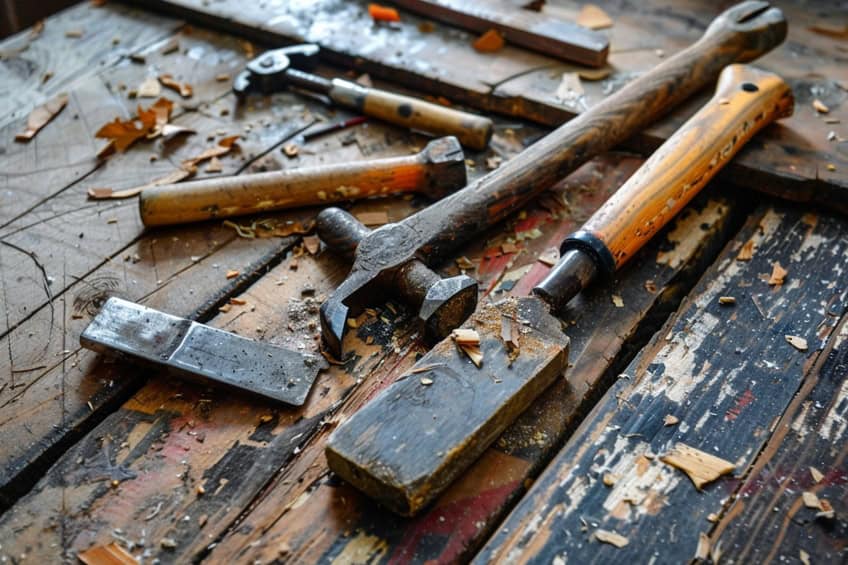
For effective veneer removal, one not only needs to be well-prepared with appropriate tools and safety equipment but also must ensure that these tools are in good condition and are used as intended.
Veneer Removal Techniques
To effectively remove veneer, one can employ a variety of techniques using heat and steam or dry methods. The choice of method depends on the condition of the veneer and the type of adhesive used.
Heat and Steam Methods
Heat and steam are effective in softening the adhesive that holds the veneer in place. One commonly used tool is a clothes iron. By placing a saturated towel over the veneer and applying a hot iron on top, heat and moisture penetrate the glue, causing it to loosen. This is especially effective for adhesives that are water-soluble.
- Steam: Applying steam directly can also help in weakening the adhesive. Ensure to use steam carefully to avoid damage to the underlying surface.
- Heat gun: A heat gun can be directed over the veneer to gradually soften the glue. Aim the heat gun at an angle to avoid overheating any one spot, which can cause the veneer to burn or bubble.
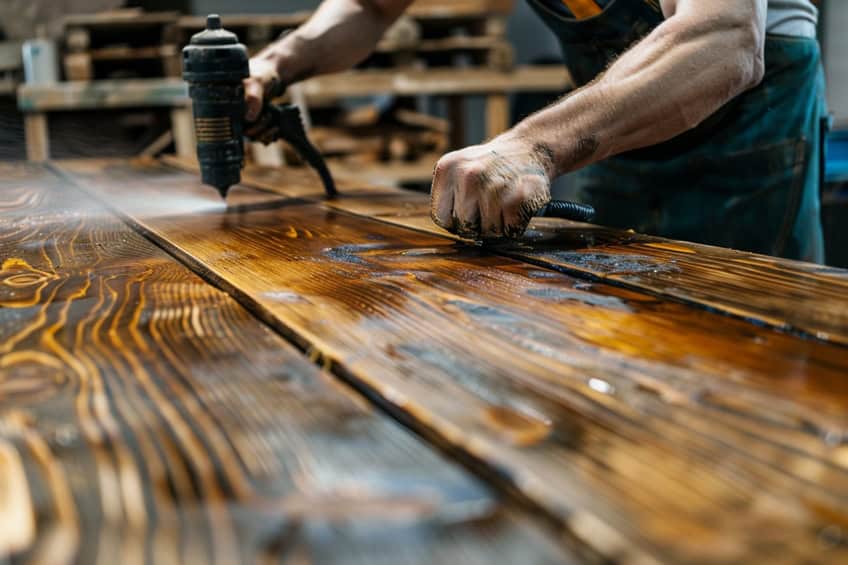
Dry Removal Methods
When the veneer is brittle or the adhesive bond is weak, dry methods can be suitable. These methods leverage physical manipulation to remove the old veneer.
- Sanding: An electric sander can be used to slowly wear away the veneer. Sanding should be done evenly to prevent gouging the underlying wood.
- Prying: A putty knife or a similar flat tool can be leveraged to gently pry and lift the veneer from the edges. Work slowly and carefully to peel away large sections, minimizing breakage and splintering.
- Dry heat: A hair dryer set on high heat can sometimes provide sufficient warmth to release the veneer without introducing moisture. Move the hair dryer back and forth to spread the heat evenly and gradually peel the veneer.
Each method requires patience and consistent application to avoid damage to the underlying surface. When opting for these techniques, wearing protective gear, such as gloves, is advisable to prevent injury.
Post-Removal Process and Surface Finishing
After veneer removal, it’s important to repair any damage and smooth the surface to prepare for finishing. This ensures a professional look whether applying stain or paint.
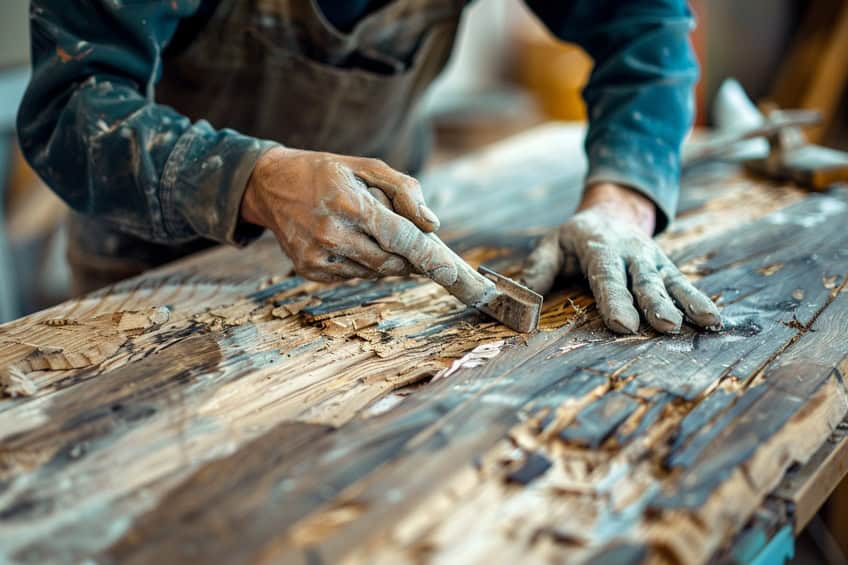
Repair and Smoothing
Once the veneer is removed, one should inspect the wood for damages and irregularities. Using wood filler is crucial to mend any chips or deep scratches. The filler should match the wood for best results. After the repair material dries, one must sand the area gently with fine-grit sandpaper to create a smooth, even surface that showcases the wood grain.
Applying Finish or Paint
Clean the raw wood thoroughly to remove all dust from sanding. When applying stain, it’s essential to apply it with the grain, allowing it to penetrate and highlight the wood’s natural beauty. For paint, a primer is recommended for better adhesion. Then apply even coats of paint, letting each layer dry completely. A final coat of protective finish will seal the paint or stain, adding durability and a polished appearance.
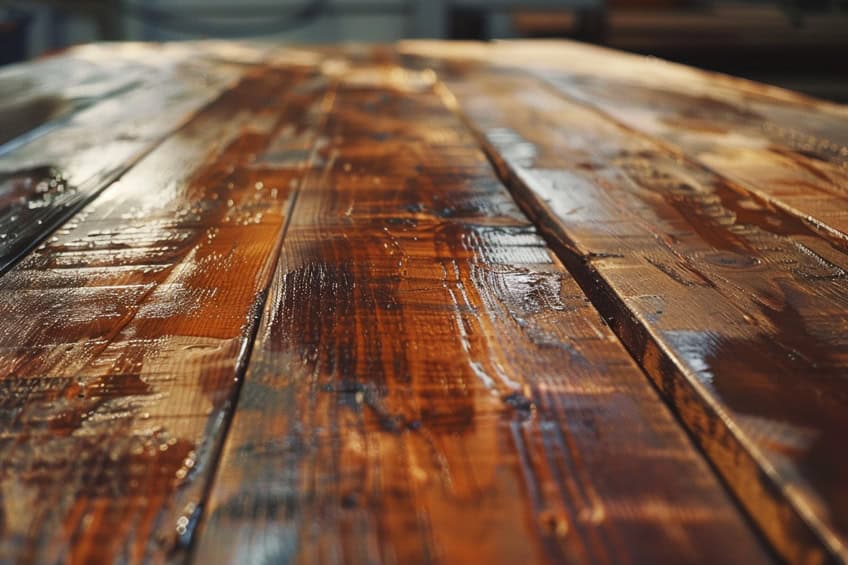
As you put the finishing touches on your woodworking project, you can proudly admire the craftsmanship and dedication it took to remove that veneer. Whether you chose the steaming method, used a heat gun, or opted for the trusty chisel, the end result is a piece that’s ready to shine in its natural glory or take on a fresh new look with a different finish. Remember, with patience and the right techniques, no veneer can stand in the way of your woodworking prowess. Now go forth and create, knowing you’ve mastered the art of veneer removal like a seasoned woodworker!
Frequently Asked Questions
What Is the Best Method to Take Veneer off Furniture Without Causing Damage?
The optimal method for removing veneer is to gently lift the edges with a putty knife, progressing cautiously to avoid splintering or gouging the wood beneath. This process should be done slowly and patiently, with attention to the responsiveness of the veneer and the condition of the underlying surface.
Can a Heat Gun Be Effectively Used to Strip Veneer from Wood Surfaces?
Yes, a heat gun can be used to soften the adhesive beneath the veneer, making it easier to remove. One should apply heat evenly and carefully, keeping the heat gun moving to prevent scorching the wood or veneer. After heating, the veneer can typically be peeled away with less resistance.
Is It Possible to Use a Steamer for the Removal of Veneer?
A steamer can be an effective tool for veneer removal, using steam to penetrate and weaken the adhesive. By holding the steamer close to the veneer and allowing the steam to soften the glue, one can gradually begin to lift the veneer with a tool like a scraper. It’s important to take care not to over-saturate the wood, which can cause warping or damage.

I have been into woodworking since 2005 and woodturning since 2011. Because of my love for wood and woodworking, I started woodhappen.com to teach other enthusiasts about how to finish and seal wood, the best woodworking tools, the different types of wood, and everything else related to woodworking! Read more about me here.

